
Our journey to Odisha had two paths, the first path being what we saw on the outside. As our bus bumped through wood-shack villages we saw men in knotted dhotis squatting beside market stalls piled with bundles of green dhania leaves and pocked oranges. We glimpsed kajal-eyed old women disappearing into narrow back streets, their jewel-coloured saris hemmed with gold brocade and dried mud. We passed school children waving to us in crisp white uniforms, scavenging dogs and of course the placid cows, secure in their sacredness and happy to cause the bus to swerve as they swayed across the road, just as they pleased.

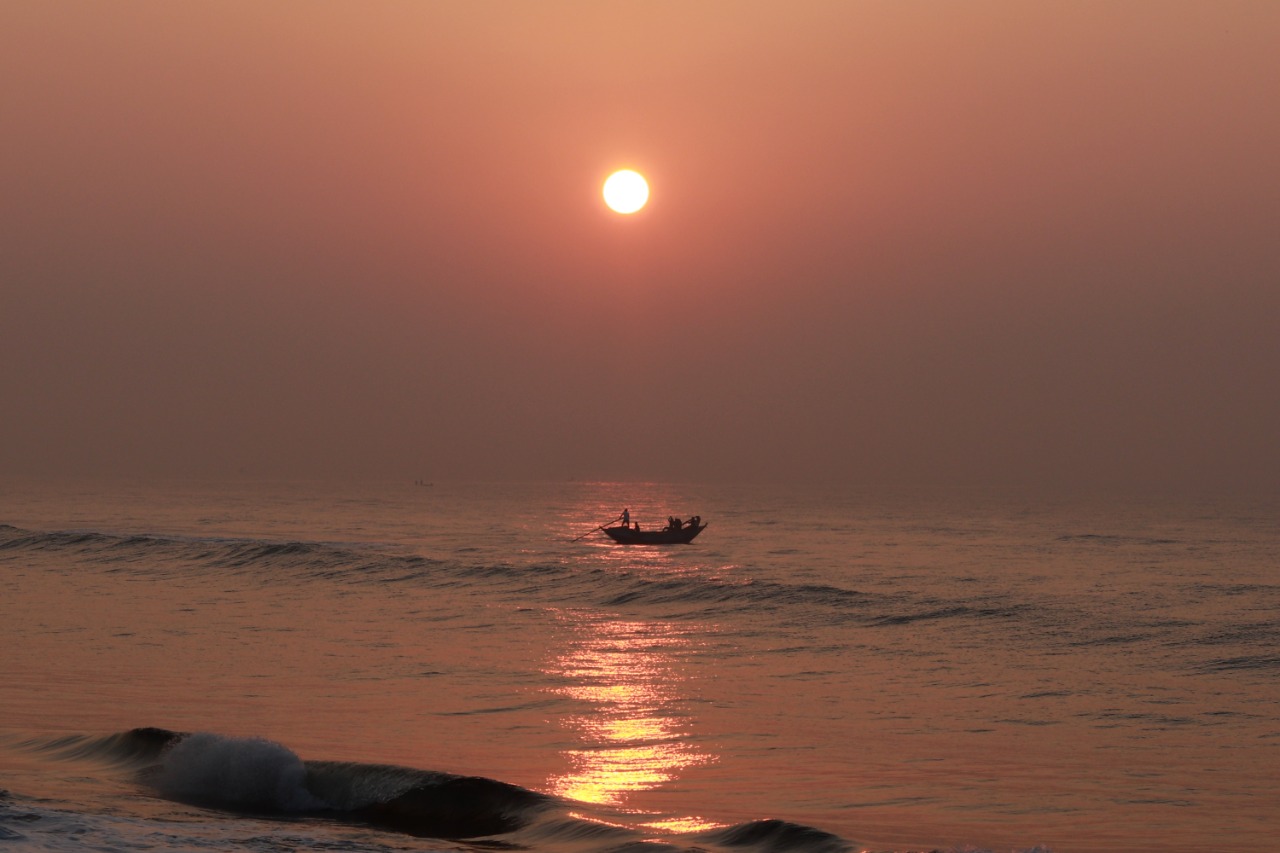
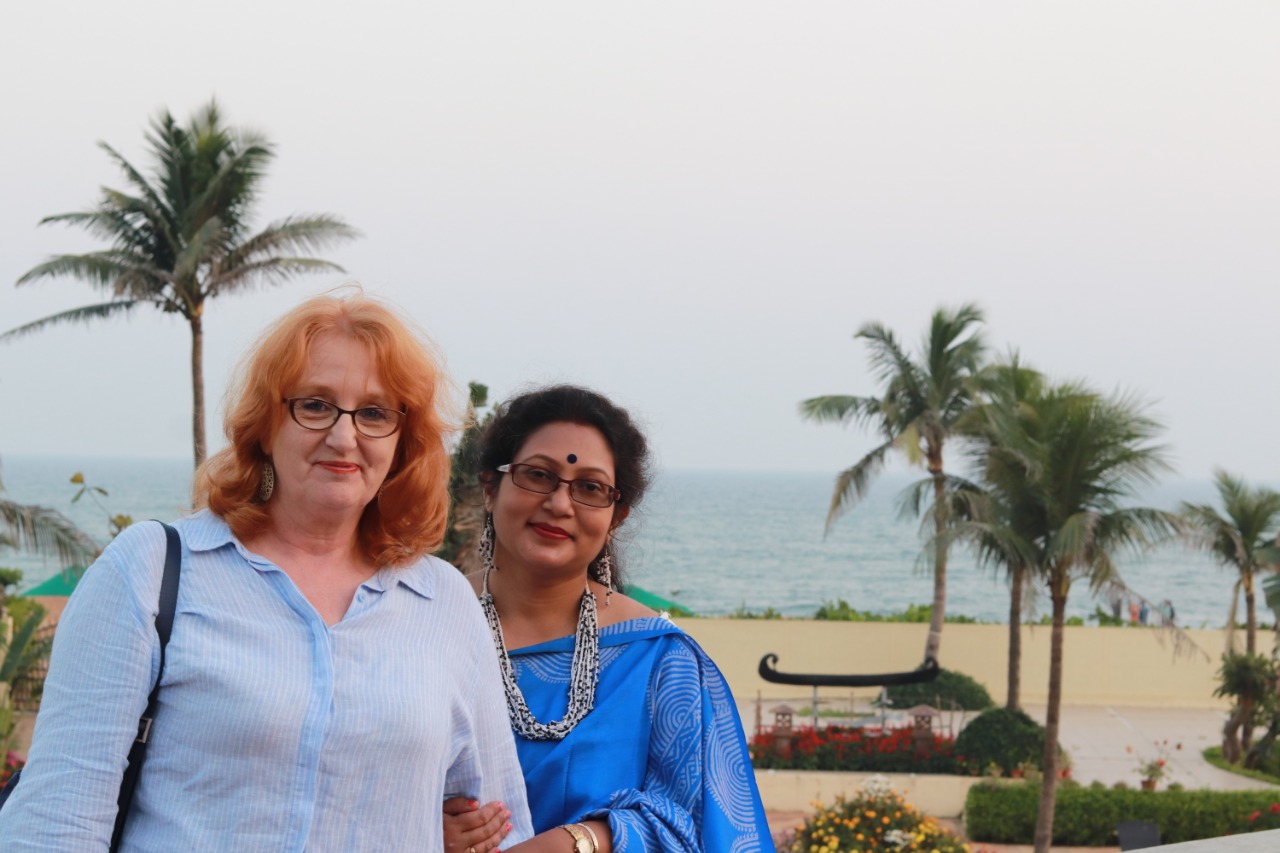
We saw lives lived as they must have been for centuries. And after endless fields of rice, sugarcane and cashew trees, we reached the fine sands of Puri and saw the setting sun as it dipped beneath the waves of the Bay of Bengal to the blown wail of conch shells. Later, in an upstairs room in Raghurajpur we saw boys dressed as girls dance with stamping ankle-bells and alluring passion, at times forming acrobatic towers with their fingertips, inches from the blades of an overhead fan. We passed the tiger-hunting forests of the Raj and dined in a Palace, half restored to glory, half eroded into history. We marvelled at the wide, languid rivers from which ancient ships had set sail for faraway South East Asia, bringing to those lands goods that perished long ago and a culture that still flourishes, more than a thousand years later.

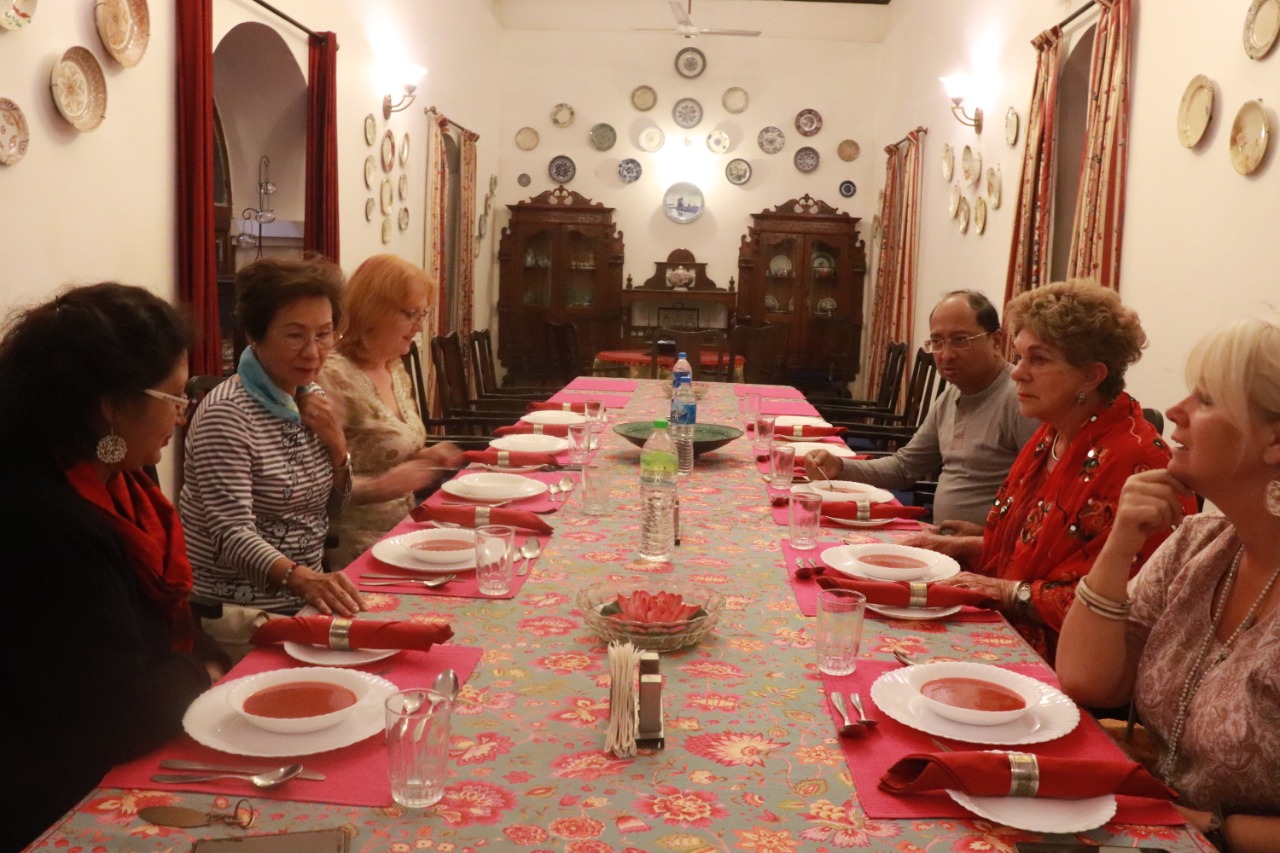

But there was a second, deeper path to our journey not the merely seen, but the voyage behind mind and its senses into consciousness itself, the journey that is India's particular genius. Following this path we felt the presence of Shiva residing in the dim 8th CE Parsurameswar sanctuary, our bare feet wet with sacred water, the dark linga-yoni strewn with bright marigolds and the air vibrating with Vedic mantras and scented by agarbatti sticks exuding sandalwood, cassia and rose. We imagined the wild yoginis of Hirapur swooping down to their roofless temple amongst tales of tantric transgression, blood sacrifice and pujari’s warning of other-worldly howls as the goddesses convene in the night. The midday sun blazed down upon us at its very own temple at Konark, an unabashed celebration of life and human sensuality, but with a tragic history. In Puri, the penetrating eyes of Lord Jagannath were too sacred to be viewed by us directly, but we were blessed by the extraordinary fortune and delicious taste of his prasad.
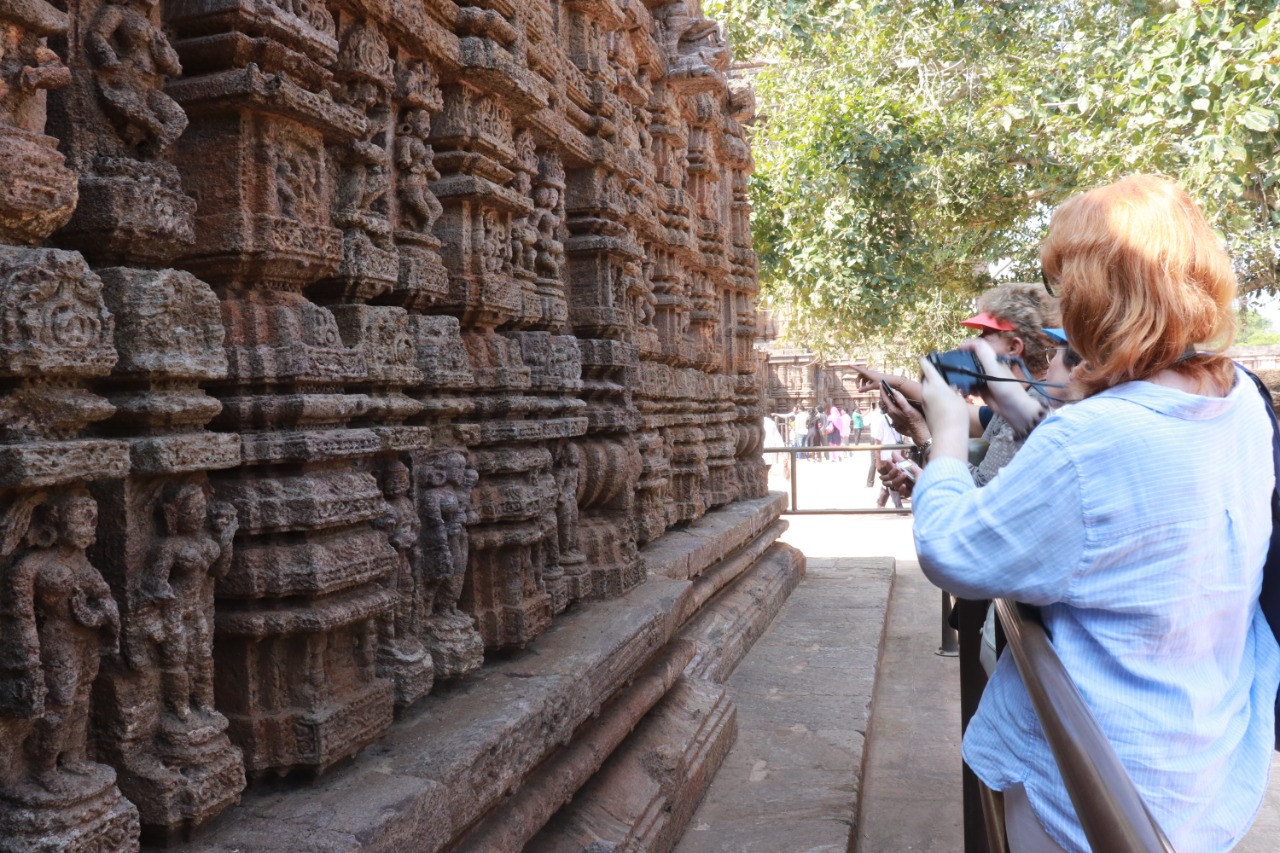

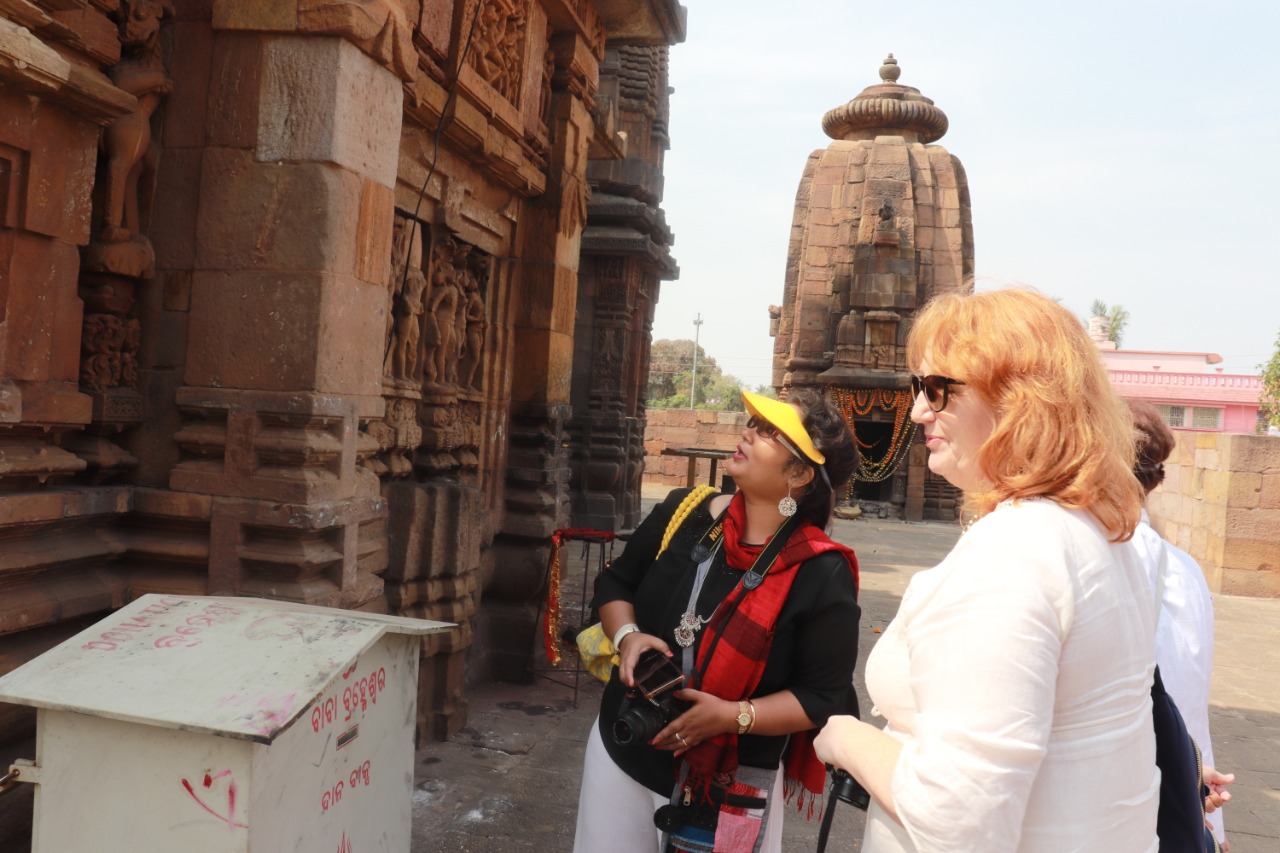
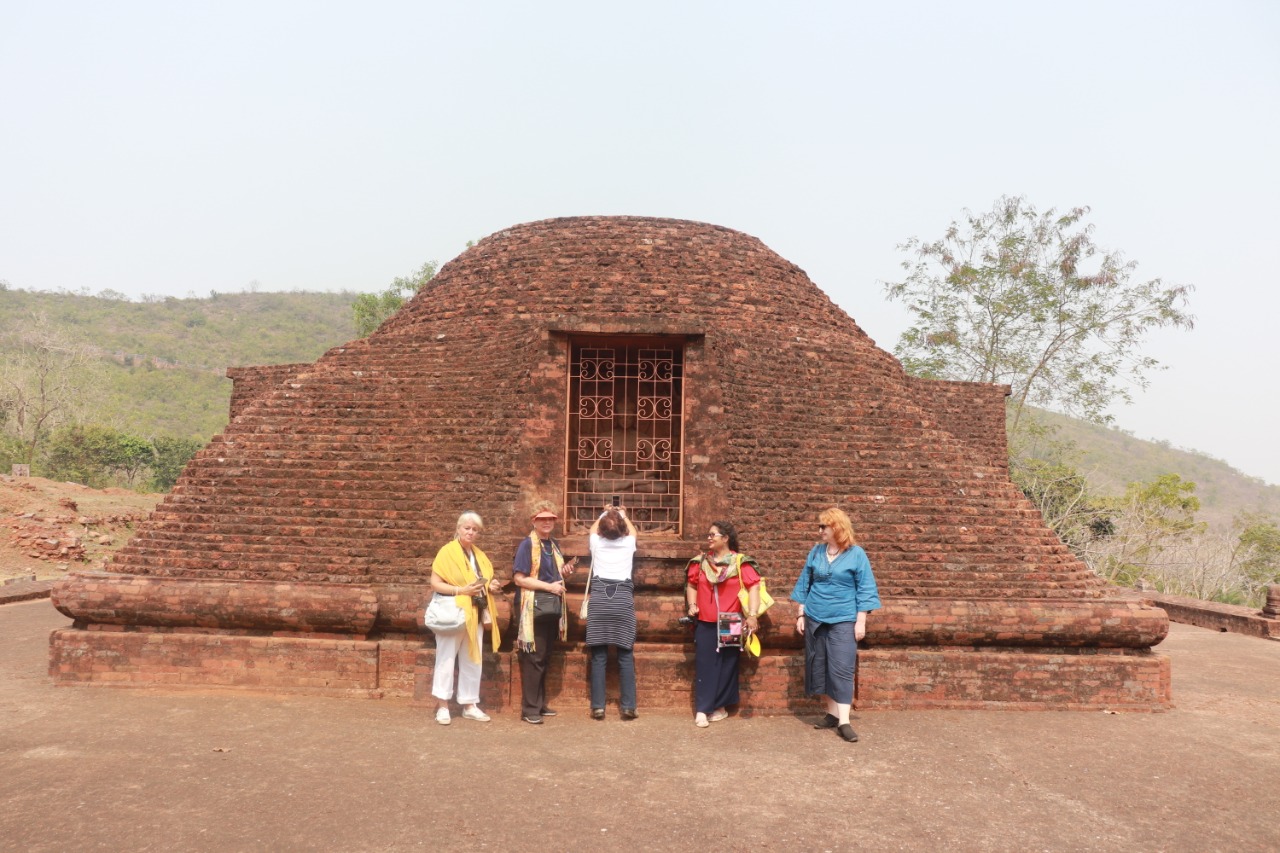
It was the serenity of ancient Udagiri and Ratnagiri however that took me the furthest down the second path. Recently unearthed, it is plausible that these monastic centres of learning were the fabled ancient Oddiayana, crucible of Mahayana and Vajrayana Buddhist doctrine, the Kalachakra tantra and possibly even birthplace of Padmasambhava(Tibet’s ‘Second Buddha’) himself. Amongst the first to see these regal bodhisattvas and radiant Buddha’s statues, so recently woken from their long sleep underground, we paused to consider that they had once influenced Buddhist practice beyond India, travelling to the lush tropical lands far to the South and also the high northern altitudes over the Himalayans peaks, and are now willing to inspire again. We walked through ornate ancient gateways lead to stupas, meditation cells and wide platforms, every stone devoted to the inner journey beyond mind.
What good fortune! Four days, two paths, and one exhilarating, unforgettable Odisha.
By Catherine Lynch
Volunteer and Guide, Thailand National Museum, Bangkok

By JITU MISHRA

The soul food of Odisha
19 Mar 2024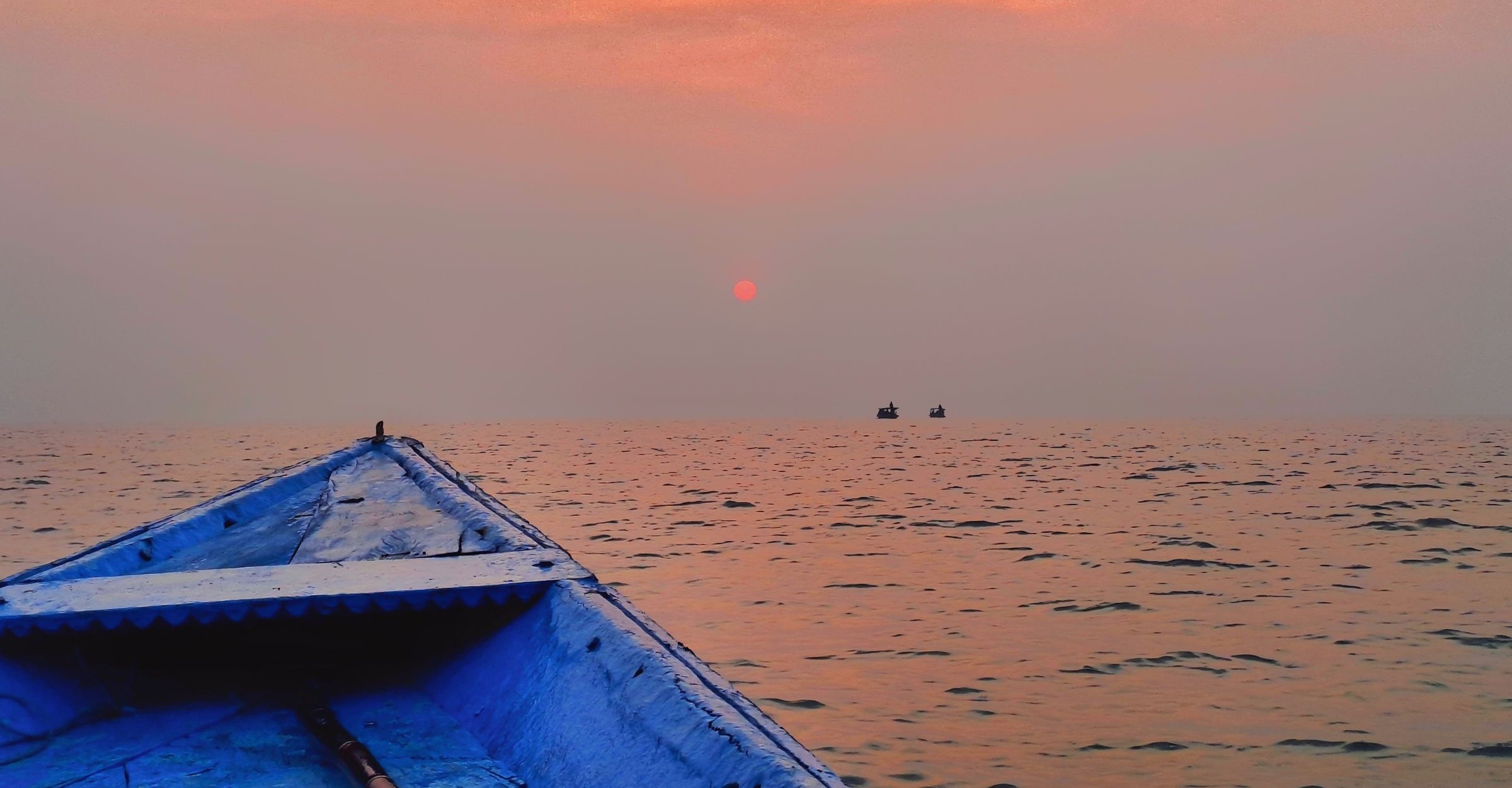
CHILIKA ODYSSEY : EXPLORING THE RICH AVIAN ...
14 Feb 2024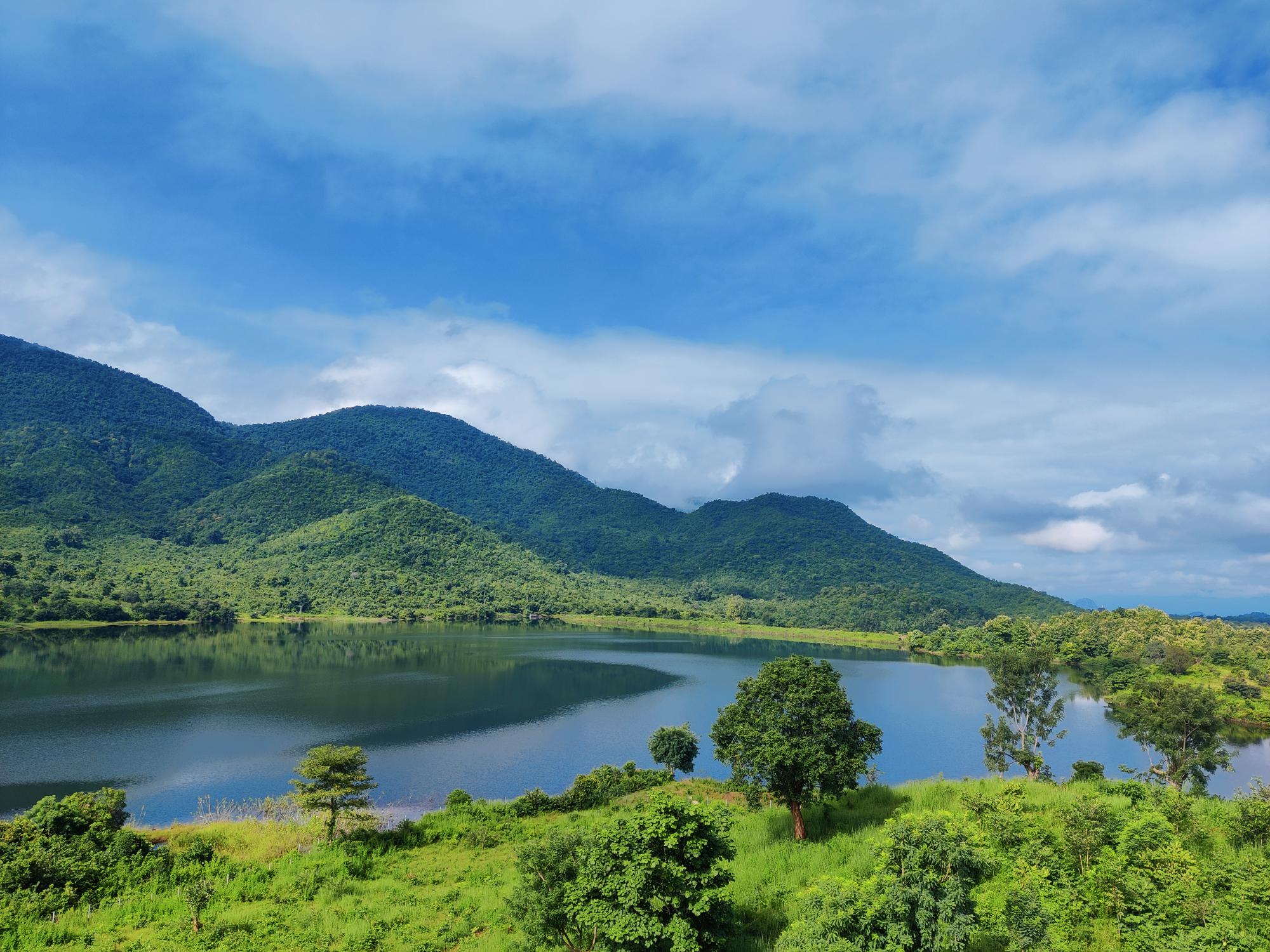
RABANDHARA ECO TOURISM
08 May 2023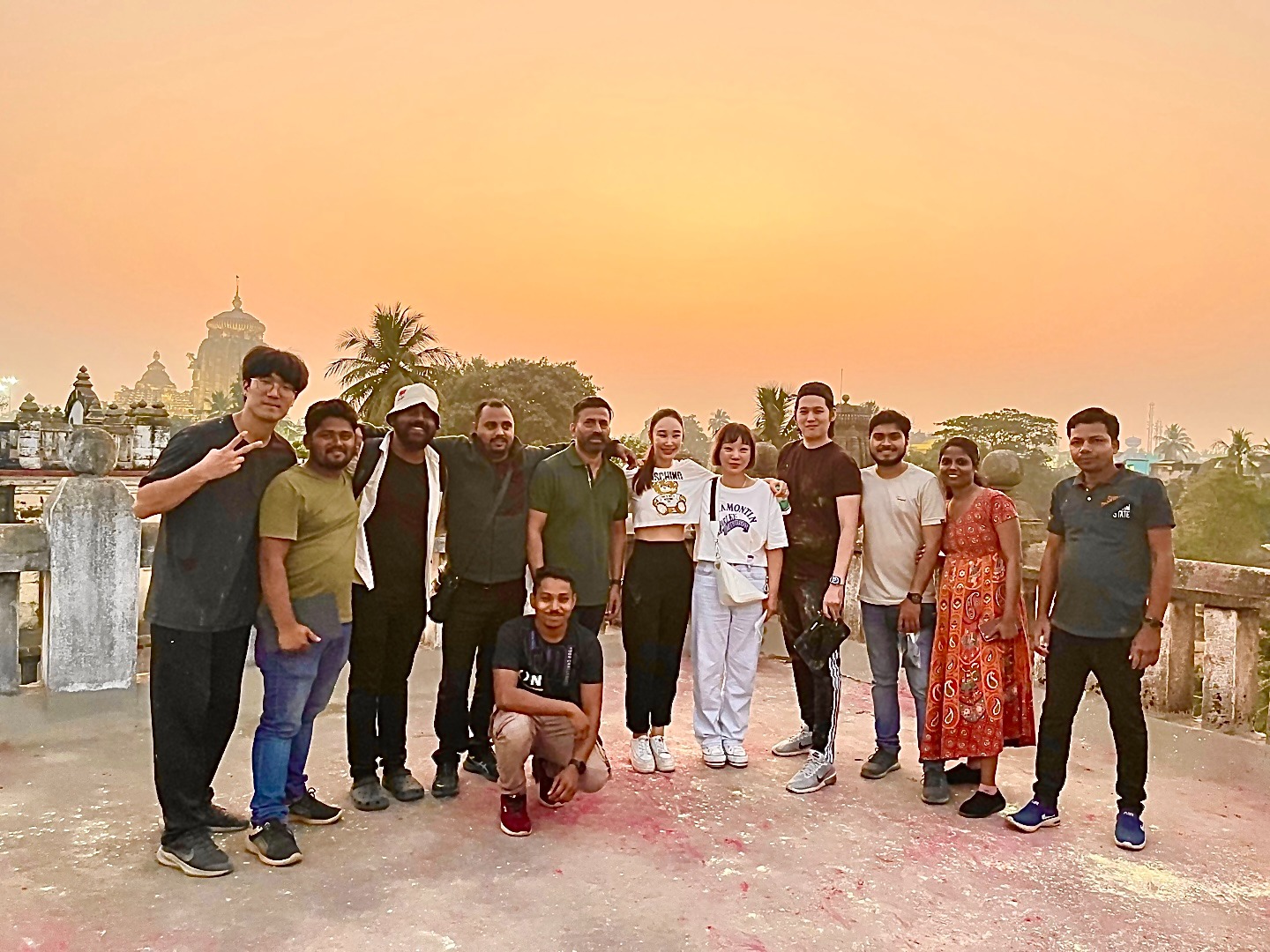
Filming vivid colours of Bhubaneswar with ...
13 Apr 2023
Spellbound Odisha a picture perfect ...
03 Feb 2023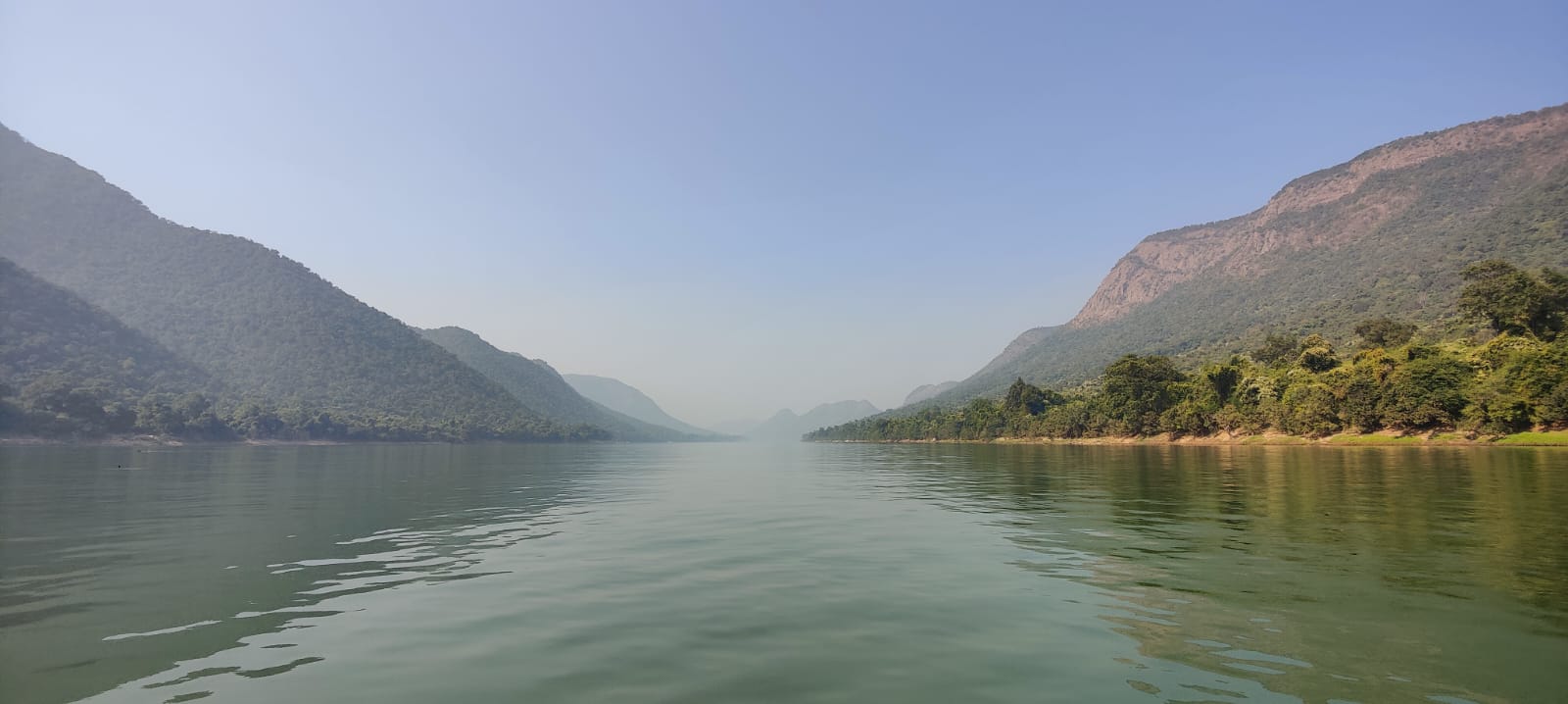
Satkosia a Nature’s Treasure Trove
03 Feb 2023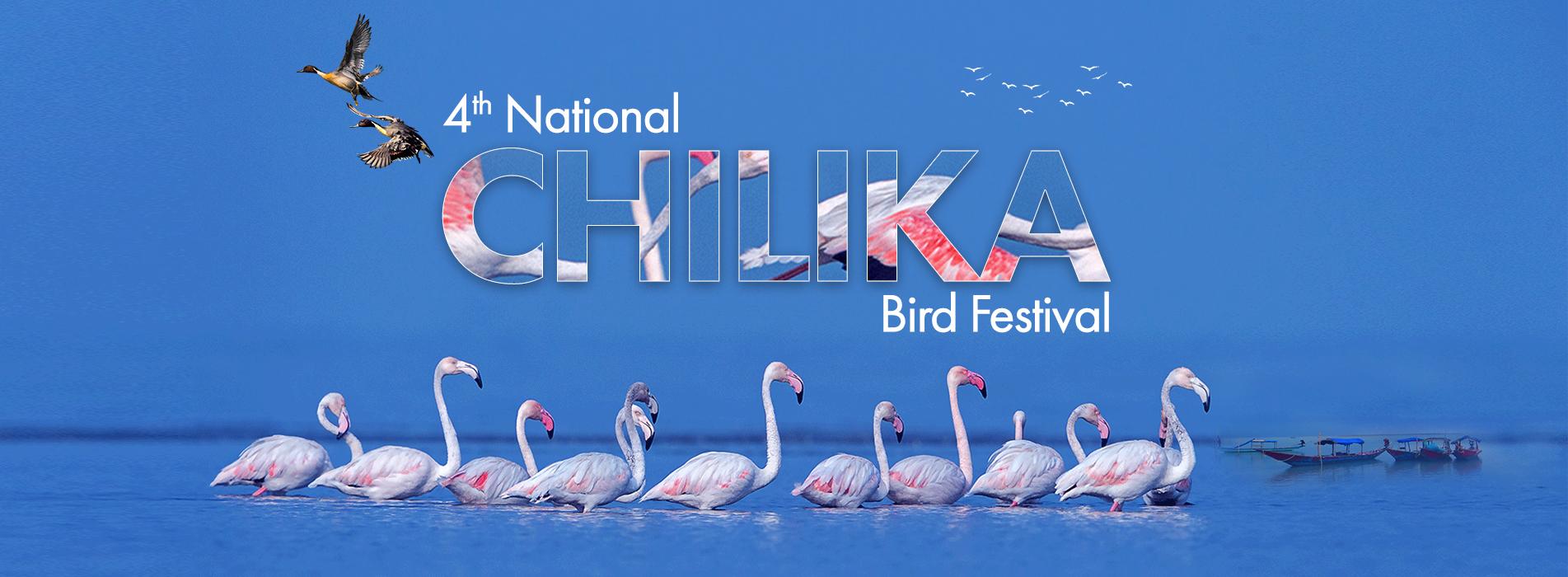
Odisha Wildlife in 4K
02 Jan 2023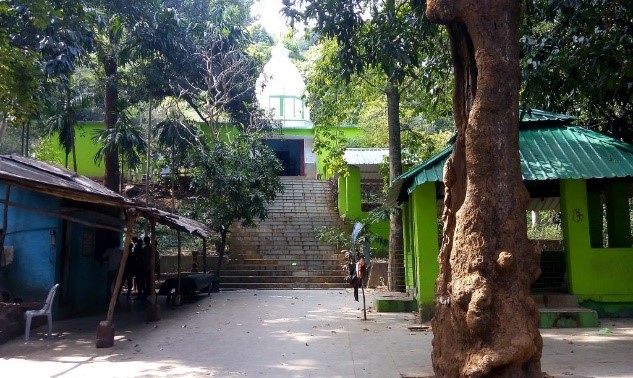
SAPTASAJYA-A Heavenly Tourist Destination
10 Oct 2022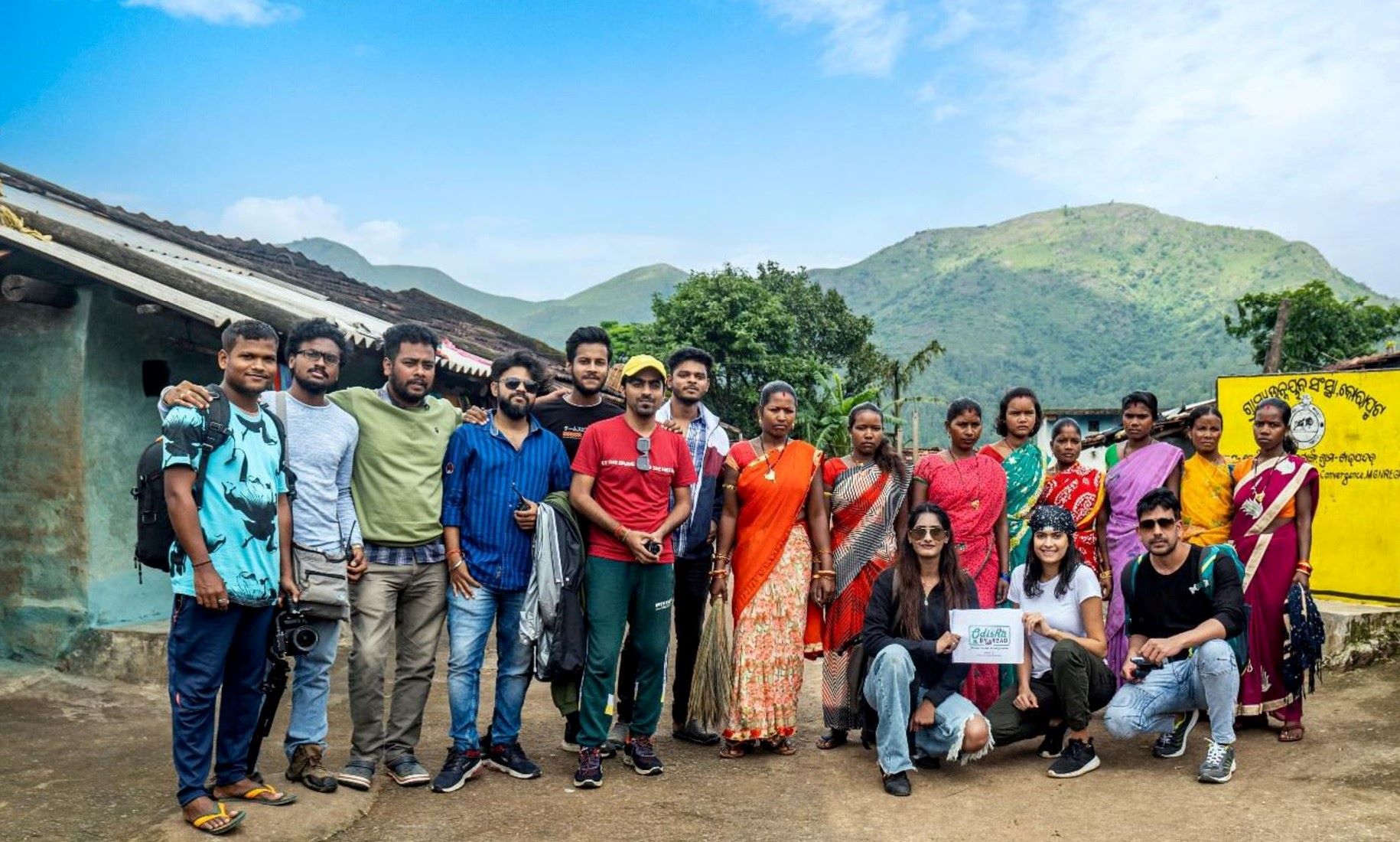
ODISHA BY ROAD 3.0-BEHIND THE SCENES
10 Oct 2022
My experiences on World Tourism Day
10 Oct 2022
Comments